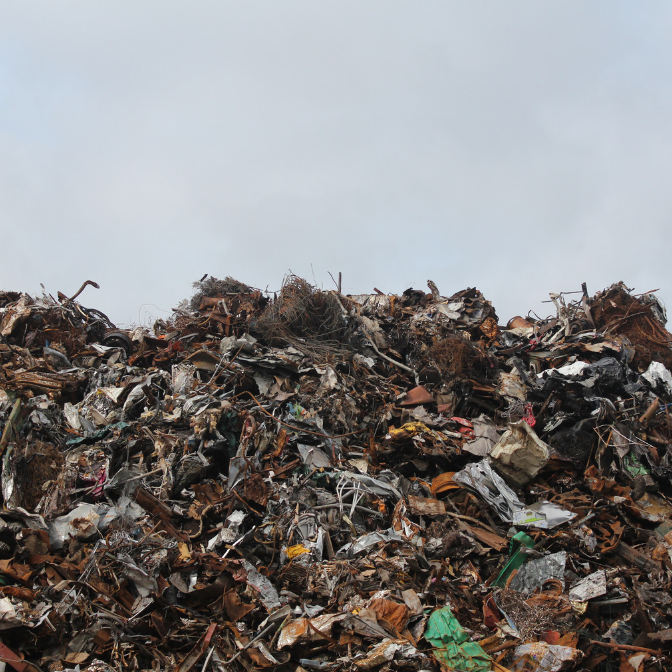Ronald Reagan once said, "Status quo is Latin for the mess we are in." Rates of chronic illness are on a steep increase. Global temperatures continue to rise. There may be one solution to reverse both of these public health emergencies: the return of healthy soil!
Today, the status quo of public health is silent but desperate. Since 2000, Alzheimer’s rates have increased by 145 percent (1), and obesity among adults has increased by 33 percent (2). Diabetes rates increased 600 percent from 1958 to 2015 (3). Asthma rates are on the rise, with 25 million suffering nationally in 2009 (4). Autism In 2018 was 1 in 59 (5), a large increase over the rate of 1 in 150 from 2000 (6).
Science is increasingly pointing to conventional food production as the key cause of this mess. Chemicals used in conventional farming are degrading the soil and are being ingested by animals and humans. Over 1 billion pounds of pesticides were used in the U.S. in 2010 (7), but one herbicide, Roundup, may be the biggest offender. Roundup's key ingredient, glyphosate, kills all weeds and plants except those coming from "Roundup ready" seeds. It also kills bacteria, fungi and other life in the soil. 280 million pounds of glyphosate are used in the U.S. annually (8).
Chemicals like Roundup kill the life in the soil (9). Healthy soil contains earthworms, bacteria, fungi and other microorganisms. These microorganisms create important nutrients humans need but cannot make, including essential amino acids (10) and alkaloids (11). Until recently these nutrients have been provided by the soil and plants around us. Chemical farming breaks the links in this web of life, and creates nutrient deficiencies in animals and humans (12).
Beginning in 1992, Roundup was also used as a drying agent to kill wheat just before harvest (13). This practice of spraying Roundup on crops right before harvest (to dry them) has become widespread and it puts glyphosate on food we eat (14). Recent studies show that when glyphosate comes into contact with intestinal linings of animals and humans it causes those linings to leak, a condition called “leaky gut” (15). The immune system responds, which causes inflammation (16). Research shows inflammation is a root cause of most of our chronic illnesses (17).
Chemical treatments to farm crops decrease the nutrient value of food and cause inflammatory disease in animals and humans (18). The good news is this can be fixed quickly. Mother Nature has incredible healing power. Within 1-2 years without chemicals, soil health begins to return, worms and the web of life are back (19).
Today 1.5 million acres have been transitioned from chemical farming to regenerative agriculture (which means no tilling of the soil and no chemical treatments) (20). Within a few years, regenerative farming allows a dramatic recovery in soil health and actually increases the profitability of the land (21). Farmers using regenerative farming methods make more money than when they were using chemical sprays. As living organisms return to the soil, and the soil returns to a state of natural balance, the food grown there becomes safer and more nutritious (22).
In addition to promoting public health, regenerative farming also returns lots of carbon to the soil (23). This is the second big benefit of healthy soil, it has tremendous capacity to store carbon, and excess carbon in the air is the biggest challenge of our time (24).
Restoring degraded soils and vegetation can draw down 330 gigatons (billion tons) of carbon, according to Dr. Rattan Lal, Director, Carbon Management and Sequestration Center, Ohio State University. Dr. Lal says this is the equivalent of 150 to 160 parts per million (ppm) of carbon dioxide. He asserts this can be accomplished in the next 80 years (25).
Just as conventional farming has disturbed the balance of life in the soil, human activities have disturbed the balance of carbon on our planet. Every living thing is made of carbon, including us. Carbon is the building block of life. It is not an enemy. Carbon cycles between five major repositories, the atmosphere, oceans, the biosphere (vegetation), soil and the fossil pool (deep underground) (26). We have learned to extract carbon from the fossil pool and burn it for energy. Land use practices have also released carbon from soil and the biosphere (27). As a result carbon concentrations in the air are abnormally high. In turn, oceans have absorbed larger than usual amounts of carbon. Too much of the Earth's carbon is now in the air and oceans, and not enough is in vegetation, soil and the fossil pool (28).
So, what is the status quo (mess we are in) with carbon? At the beginning of the Industrial Revolution carbon concentration in the air was 280 parts per million (ppm). As of August, 2019 carbon concentration is the air was 409.95 (ppm), an increase of about 40% (29). In the last 800,000 years carbon concentrations in the atmosphere have never been above 300 (ppm) (30). The extra carbon in the atmosphere has increased the greenhouse effect, trapping more of the sun's warmth in the lower atmosphere (31). Based on NOAA data, 2017 was the third-warmest year on record behind 2016 (warmest) and 2015 (second warmest) (32). That extra heat is driving regional and seasonal temperature extremes, reducing snow cover and sea ice, intensifying heavy rainfall and changing habitat ranges for plants and animals—expanding some and shrinking others (33).
Restoring the carbon balance is an urgent need. We have to stop extracting fossil carbon, and we need to remove carbon from the air and oceans. The solution to removing the carbon is the soil. Through photosynthesis plants pull in carbon from the air and in cooperation with soil microbes use it to build soil. Huge amounts of carbon can be stored in soil. As the carbon load in the atmosphere decreases the carbon concentration in the oceans will also decrease (34) .
Regenerative farming improves public health, and helps to restore the carbon balance. Farmers are making this switch because of increasing demand for organic, non-GMO food. Consumers are driving this process with their food choices! Encourage all of your friends and family to get on this bandwagon because, "Our health, the health of our soils and the health of our planet are one and the same." (35).
Sources:
- https://www.alz.org/alzheimers-dementia/facts-figures
- https://www.stateofobesity.org/obesity-rates-trends-overview/
- https://www.cdc.gov/diabetes/statistics/slides/long_term_trends.pdf
- https://www.cdc.gov/vitalsigns/asthma/index.html#Latest%20Findings
- https://www.niehs.nih.gov/health/topics/conditions/autism/index.cfm#footnote1
- https://www.scientificamerican.com/article/the-real-reasons-autism-rates-are-up-in-the-u-s/
- https://www.ncbi.nlm.nih.gov/pmc/articles/PMC2946087/
- https://www.epa.gov/sites/production/files/2019-04/documents/glyphosate-response-comments-usage-benefits-final.pdf
- https://pdfs.semanticscholar.org/9539/20c810702b44eea9bec5a0586454e6324e33.pdf
- https://medlineplus.gov/ency/article/002222.htm
- https://www.medicinenet.com/script/main/art.asp?articlekey=25034
- Zach Bush, M.D. | https://www.youtube.com/watch?v=f3dppZMmNLs - Skikamate pathway @ 2:06:40 into presentation
- https://ensia.com/features/glyphosate-drying/
- https://ensia.com/features/glyphosate-drying/
- https://www.ncbi.nlm.nih.gov/pubmed/15683179
- https://www.frontiersin.org/articles/10.3389/fimmu.2017.00598/full
- https://www.johnshopkinshealthreview.com/issues/spring-summer-2016/articles/understanding-inflammation
- Farmers footprint, https://farmersfootprint.us/watch/ @ 14:46 into the presentation
- https://www.no-tillfarmer.com/articles/8937-in-depth-the-money-making-power-of-soil-microbes
- https://zachbushmd.com/
- https://static1.squarespace.com/static/5b3fcdee9772aed5f14b363e/t/5b48d82a0e2e726b98dfd616/1531500595884/2018+LaCanne+and+Lundgren+PeerJ.pdf
- https://rodaleinstitute.org/why-organic/issues-and-priorities/nutrient-density/
- https://nas-sites.org/dels/studies/cdr/
- https://www.un.org/en/sections/issues-depth/climate-change/
- https://www.facebook.com/groups/Soil4Climate/permalink/2280436375561437
- https://kisstheground.com/videos/
- https://kisstheground.com/videos/
- https://kisstheground.com/videos/
- https://www.co2.earth/earths-co2-main-page, and https://www.climate.gov/news-features
- https://www.climate.gov/news-features
- https://www.climate.gov/news-features
- https://www.climate.gov/news-features
- https://www.climate.gov/news-features
- https://kisstheground.com/videos/
- https://kisstheground.com/videos/






